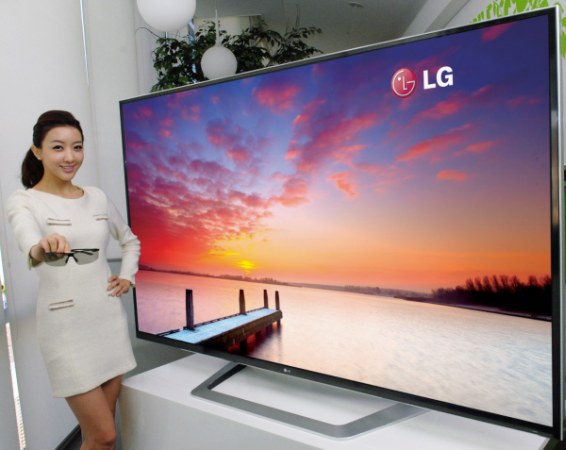
Forget “4K.” The next-generation high definition standard will be officially called “Ultra High Definition” when it hits homes, the Consumer Electronics Association announced yesterday.
[aditude-amp id="flyingcarpet" targeting='{"env":"staging","page_type":"article","post_id":560148,"post_type":"story","post_chan":"none","tags":null,"ai":false,"category":"none","all_categories":"business,media,mobile,","session":"C"}']Current HDTV displays top out at a resolution of 1080p, also known as “Full HDTV.” 4K is a standard currently being used in theaters, and from my experience it provides an almost film-like image quality to the big screen. When it comes to the home, though, it looks like the CEA is aiming for a more marketable and less technical term for the next big HD upgrade.
So what goes into Ultra HD? According to the CEA, it will sport a resolution of at least eight million active pixels, with a minimum size of 3,840 by 2,1060 pixels. Displays also need to maintain a 16 by 9 aspect ratio (the widescreen format that’s already required for HDTVs). Ultra HD devices have to include at least one digital input that can handle 4K video without upconversion.
AI Weekly
The must-read newsletter for AI and Big Data industry written by Khari Johnson, Kyle Wiggers, and Seth Colaner.
Included with VentureBeat Insider and VentureBeat VIP memberships.
For most consumers, though, Ultra HD may be more than they need. Current 1080p HDTVs work well up to 80 inches — so unless you go beyond that size, 4K isn’t really worth it for most viewing distances. Home theater gurus, for the most part, also feel that the idea of 4K TVs in the home is “stupid, stupid, stupid.”
The Ultra HD name is even more confusing considering that Japan’s NHK just received approval for “Ultra-High Definition TV” to describe 8K TVs. (Yup, you guessed it, 8K is the next step beyond 4K.) Now it seems like NHK may have to come up with a new way to describe its next-next gen technology.
We’ve dropped a line to CEA, asking them to explain some of this naming confusion.
Update: A CEA representative clarified the UHD confusion, saying that the group was aware of the other next-gen HD names. They noted that CEA found market research for the Ultra HD name tested well with consumers, and that they understand the technology as something superior to current HD standards. They also added that manufacturers can add modifiers to clarify their products.
ITU chose the term Ultra High Definition for both 4K and 8K. NHK uses the brand Super Hi-Vision to refer to its 8k technology, a long term project not expected to be fielded until after 2020. Our UHD working group was aware of both of these terms.
CEA’s terminology is for consumers and manufacturers are free to add an additional modifier to our UHD nomenclature, such as UHD 4K, should they chose.
Sony, meanwhile, is saying it will still use the 4K label alongside UHD. A Sony spokesperson sent us the following statement over e-mail:
Sony lauds the CEA’s efforts to come up with a common language to describe the next generation high-definition technology. However, to ensure clarity for consumers and delineate between today’s and tomorrow’s technology, Sony will continue to use the 4K moniker for its products and will market its future products as 4K ultra high-definition (4K UHD).
Above: LG’s 84-inch 4K TV.
[aditude-amp id="medium1" targeting='{"env":"staging","page_type":"article","post_id":560148,"post_type":"story","post_chan":"none","tags":null,"ai":false,"category":"none","all_categories":"business,media,mobile,","session":"C"}']
VentureBeat's mission is to be a digital town square for technical decision-makers to gain knowledge about transformative enterprise technology and transact. Learn More
